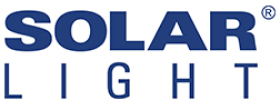
Do you ever wonder where, how, when, or why photometers are even in existence in the first place? Every new product began somewhere, with somebody having a great original idea. From that idea, evolves a plan of action, and finally a creation. Photometers have been used to measure light for many years, and have come a very long way from their crude beginnings to what they are now.
Before photometers were created, humans could only rely on using the naked eye to measure light. However, photometers were invented, and evolved to measure multiple forms of light including light absorption rates and fluorescence light ranges.
One of the many industries that benefited greatly from the invention of photometers was the digital photography industry. By using a photometer, digital photographers can easily determine the amount of light exposure. The correct light exposure is critical when trying to take the perfect photograph. Inside digital cameras, photometers are working to measure the correct amount of light to produce the masterpiece!
While digital photographers are using photometers to become the next Jay Maisel or Vincent Versace (check out some of their work sometime), scientists are using them to become the next Copernicus or Newton. For example, using a photometer, scientists can measure the intensity and composition of sunlight very accurately as it falls onto the earth. Solar Light Company specializes in the manufacture and calibration of scientific grade photometers, sensors and sensors to measure light and its constituent parts with extreme accuracy, and provide information to a wide audience of scientists, professionals and the general public. Typical everyday applications can be found in the General Laboratory environment, Life Sciences, Industrial and Forensics. Measurements are taken for:
Quality Control, Non-Destructive Testing, UV Curing, Magnetic Particle Inspection, Fluorescent, Chemiluminescence, Bioluminescence, Colony Counting, In Vivo Imaging, Small Animal Imaging, Plants, DNA, RNA, Microtiter Plates, Densitometry, Thin Layer Chromatography(TLC), Membrane Arrays, Gel Documentation, Image Analysis, Sterilization, Bacterial Identification, Specimen Staining, Gel Electrophoresis, Chlorination, Pesticide Analysis, Nucleic Acid Visualization, Genetic Experiments, Virology, Culture Fluorescence, Hybridization, Arson Investigation, Counterfeit Currency Detection, Signature Verification and Material fluorescence
Because photometers can be used by such various professionals in such varied applications, they have become one of the most important devices in the world.
